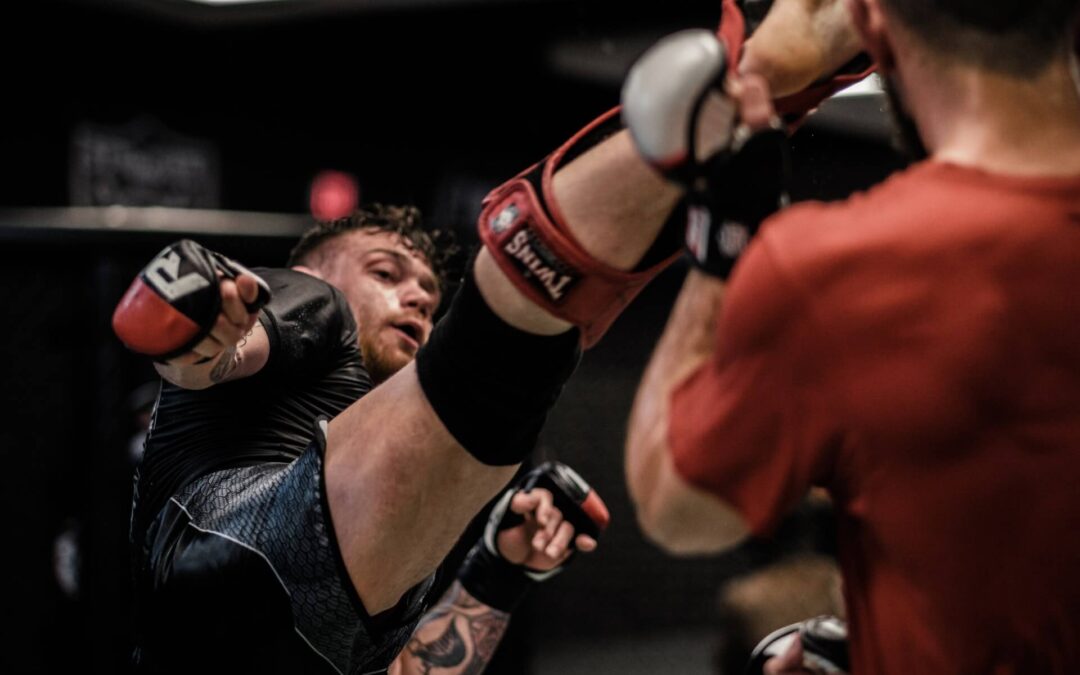As mentioned in the previous post ‘Healthy Joints in Mixed Martial Arts’, awesomely macho and archaic training is seen a lot in the MMA strength and conditioning world, and it has its pros and cons. The purpose of training in the gym is ultimately to get the athlete stronger, faster, more powerful and balance out sport-related imbalances and stress overloads.
The most part of S&C training for MMA athletes will be similar to what any other athlete needs to do. Every athlete needs to be have a certain level of mobility and flexibility. Every athlete has an ideal joint-by-joint position from which force should be generated, for example the top of the arm bone (humeral head) should be centered in the hollow part of the shoulder blade (glenoid fossa) which is normally kept there by a muscular and capsular joint effort. Every athlete needs a certain level of joint stability and base strength. Every athlete needs to be able to push, pull, squat, lunge, twist, generate force, accelerate and decelerate force, train both hip-dominant and knee-dominant movements and develop a strong core. The direction of forces that need to be generated by athletes will differ and energy-systems trained will differ, and the latter is probably the biggest training factor that needs to be manipulated for MMA athletes.
Energy Systems
Amateurs have a 3min:1min work to rest ratio and pro’s have a 5min:1min work to rest ratio. This negative work to rest means they need to be trained to become absolute machines! They need to train power-endurance, which sounds like an oxymoron. The one who cannot repeatedly generate power may be the one that loses out.
Big metabolic circuits are usually the best to train this type of endurance, and it’s common that circuits mimic the duration of fight rounds, or progressively lead up to that duration. Heavy strength exercises and power exercises (high intensity, low reps) are good to mix with higher rep exercises like ropes, sprints, sleds and so forth. In light of keeping the athlete’s joints healthy, emphasise good technique and select exercises that the athlete most struggles with/their weak points, rather than just going hell-bent on the macho-like movements that seem cool to do. Although non-specific to time in the ring, Tabata sprint intervals are another good method for increasing work capacity, or create your own type of interval – such as 20 second wrestles with a 40m sprint and repeat 10 times.
Flexibility and Mobility
BJJ guys may be naturally more flexible athletes and use that to their advantage in competition. Naturally mobile guys in the hips like BJ Penn and Eddie Bravo are going to be fine with BJJ moves like rubber guard, but most guys don’t have this much mobility in their hips, so they’ll end up torquing their knee and over-flexing their lumbar spine. Work with what range is available for that athlete and include some flexibility and mobility drills for maintenance and possibly improvement in range of motion, where needed.
Core Training
I see the need to have strength where the lumbar spine is in a flexed position, since this is the position MMA athletes are in all the time and strength and power is needed in situations like resisting their opponent and powerfully getting up off the ground. I also see the need to avoid further lumbar flexion exercises in the gym and to focus on anti-rotation and anti-extension movements, since they are potentially close to stress overload in this area of the body. I have written a post on my views on abdominal crunching here – Core On Crunches.
The final words are, aim to keep the athlete’s joints moving in a good way, then build strength and power and subsequently your athletes are going to be more effective competitors. You can add strongman/crossfit movements to their program, and when programmed correctly they can have huge advantages, but these althletes don’t necessarily need to have the crap beaten out of them with over-the-top macho exercises that resemble a frustrated hunter trying to beat a wild animal.
